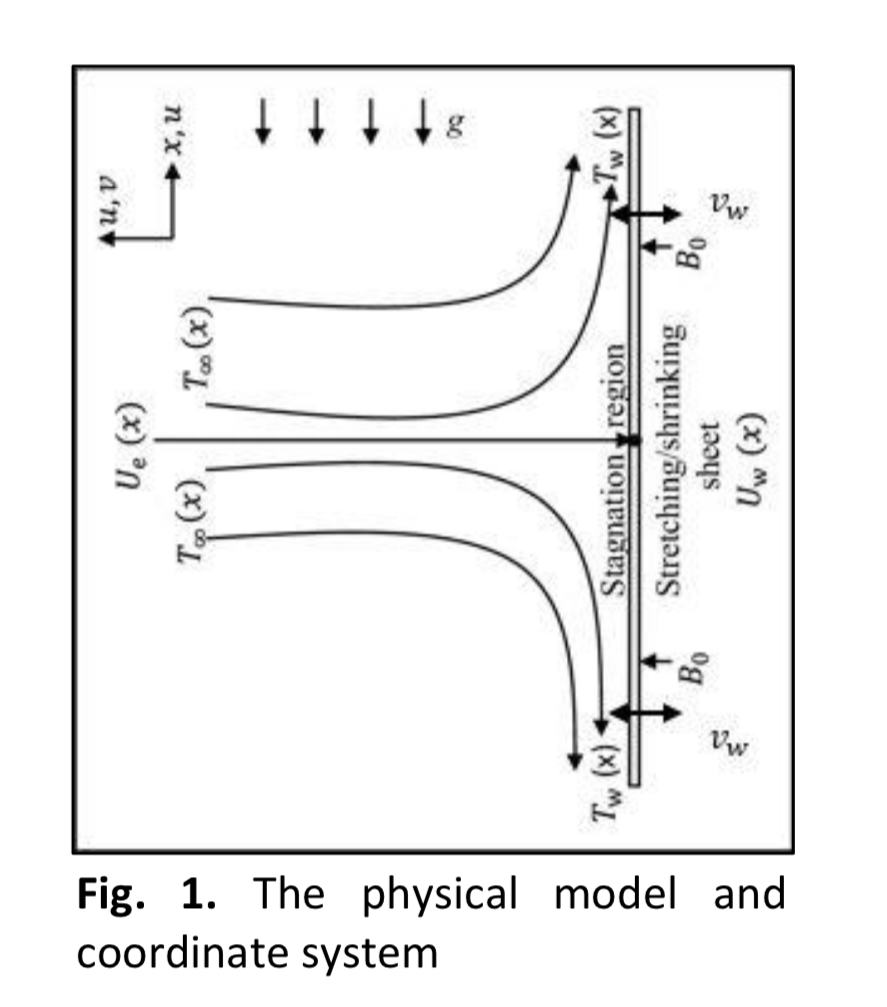Double Stratified MHD Stagnation Point Slip Flow Over a Permeable Shrinking/Stretching Surface in A Porous Medium
DOI:
https://doi.org/10.37934/arfmts.90.2.6472Keywords:
Boundary layer, Stagnation point slip flow, MHD, Permeable, Porous mediumAbstract
The intention of this article is to investigate the impact of slip of MHD stagnation point flow over a permeable shrinking/stretching sheet with double stratification in a porous medium. Employing the appropriate similarity transformations and non-dimensional variables, the governing partial differential equations were reduced into a set of nonlinear ordinary differential equations. These equations were solved using shooting method and influence of pertinent variables on velocity, temperature and concentration are computed and analyzed. It was found that the slips have the propensity to control boundary layer flow and as the velocity slip increases, the momentum, thermal, and concentration boundary layer thickness become thinner for velocity slip. Therefore, velocity slip acts as a boost for enhancement of the velocity profile in the boundary layer region, whereas temperature and concentration profiles decelerate with the velocity slip. It is also shown that the skin friction coefficient has decreased as the values of velocity slip increase while the It was found that the slips have the propensity to control boundary layer flow and as the velocity slip increases, the momentum, thermal, and concentration boundary layer thickness become thinner for velocity slip. Therefore, velocity slip acts as a boost for enhancement of the velocity profile in the boundary layer region, whereas temperature and concentration profiles decelerate with the velocity slip. It is also shown that the skin friction coefficient has decreased as the values of velocity slip increase while the local Nusselt number and the local Sherwood number are increasing. A comparison with previous studies available in the literature has been done and found an excellent agreement by comparing the numerical results in two decimal places which supports the validity of the present analysis.
Downloads
































